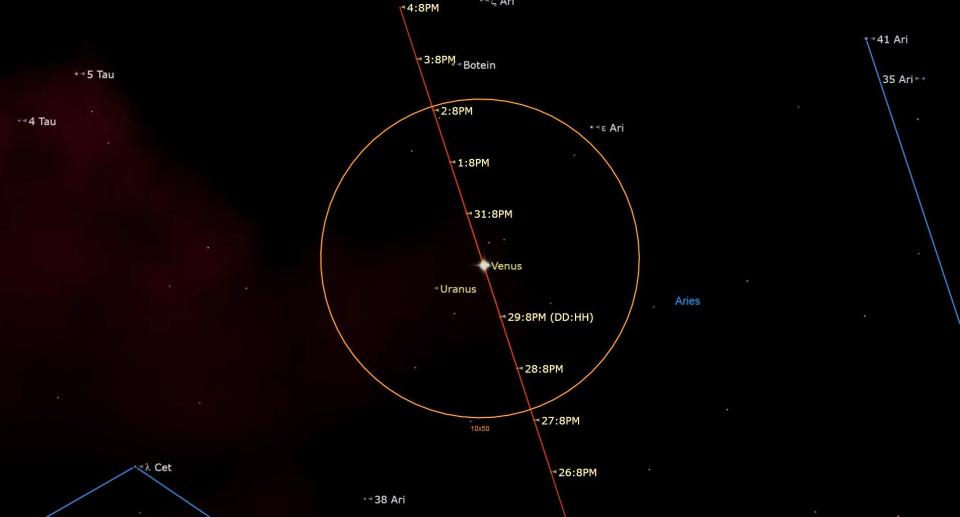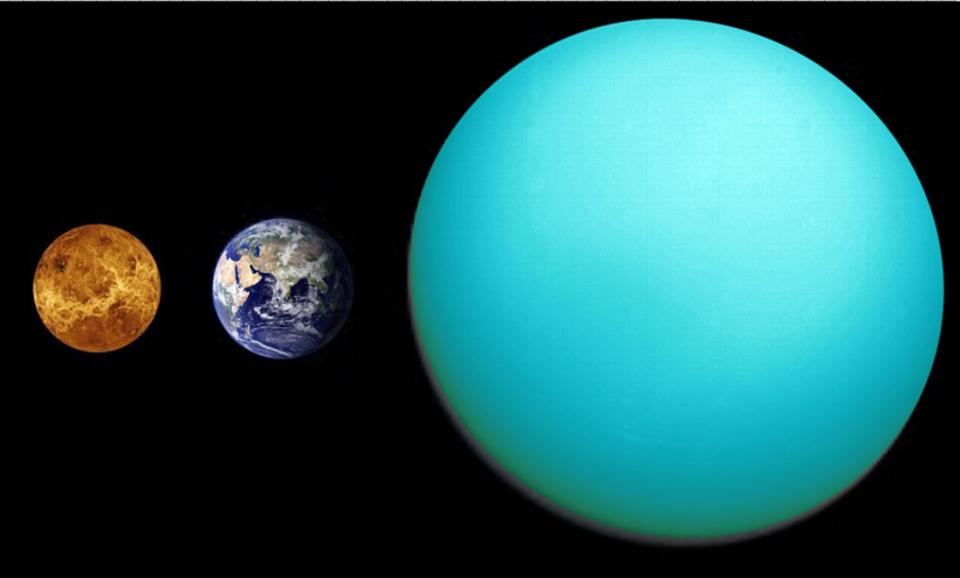See Venus meet up with Uranus in the sky tonight (March 31)


The solar system's hottest planet and its coldest one will be in conjunction on Friday (March 31), offering a rare opportunity for skywatchers.
Venus (the hottest) and Uranus (the coldest) will share the same right ascension — the celestial equivalent of longitude — as both the weekend and April approach, with Venus passing just to the north of Uranus in the sky.
From New York City, the conjunction between the two planets will become visible at around 7:35 p.m. EDT (2335 GMT), when Venus and Uranus rise to around 29 degrees over the western horizon, according to In the Sky. (Your clenched fist held at arm's length covers about 10 degrees of sky.) The planets will vanish three hours after the sun sets, at around 10:18 p.m. EDT (0218 GMT on April 1).
Related: Night sky, March 2023: What you can see tonight [maps]

During the conjunction, both planets will be located in the constellation of Aries. The duo will be too widely separated to be seen together through a telescope.
Venus will have a magnitude of -4.0, bright enough to be seen with the naked eye, according to In the Sky, while Uranus will have a magnitude of 5.8, meaning it will be best viewed with binoculars or a telescope. (On the magnitude scale used by astronomers, negative numbers refer to brighter objects.)
This disparity stems from the two planets' differing distances from the sun. Though Uranus is over four times wider than Venus, it is a whopping 17 times farther away from Earth than is Venus, our planet's closest neighbor. Venus is the second planet from the sun, while Uranus is the seventh.
But this distance from the warmth of our star is only partially responsible for the record-breaking cold temperatures recorded at Uranus. Its fellow ice giant Neptune is farther from the sun, and while it may have the coldest average temperatures at around minus 214 degrees Celsius (minus 353 degrees Fahrenheit), Uranus holds the distinction of having the coldest recorded temperature of the solar system's eight major planets, at minus 224 degrees C (minus 371 degrees F).

 Yahoo Autos
Yahoo Autos 